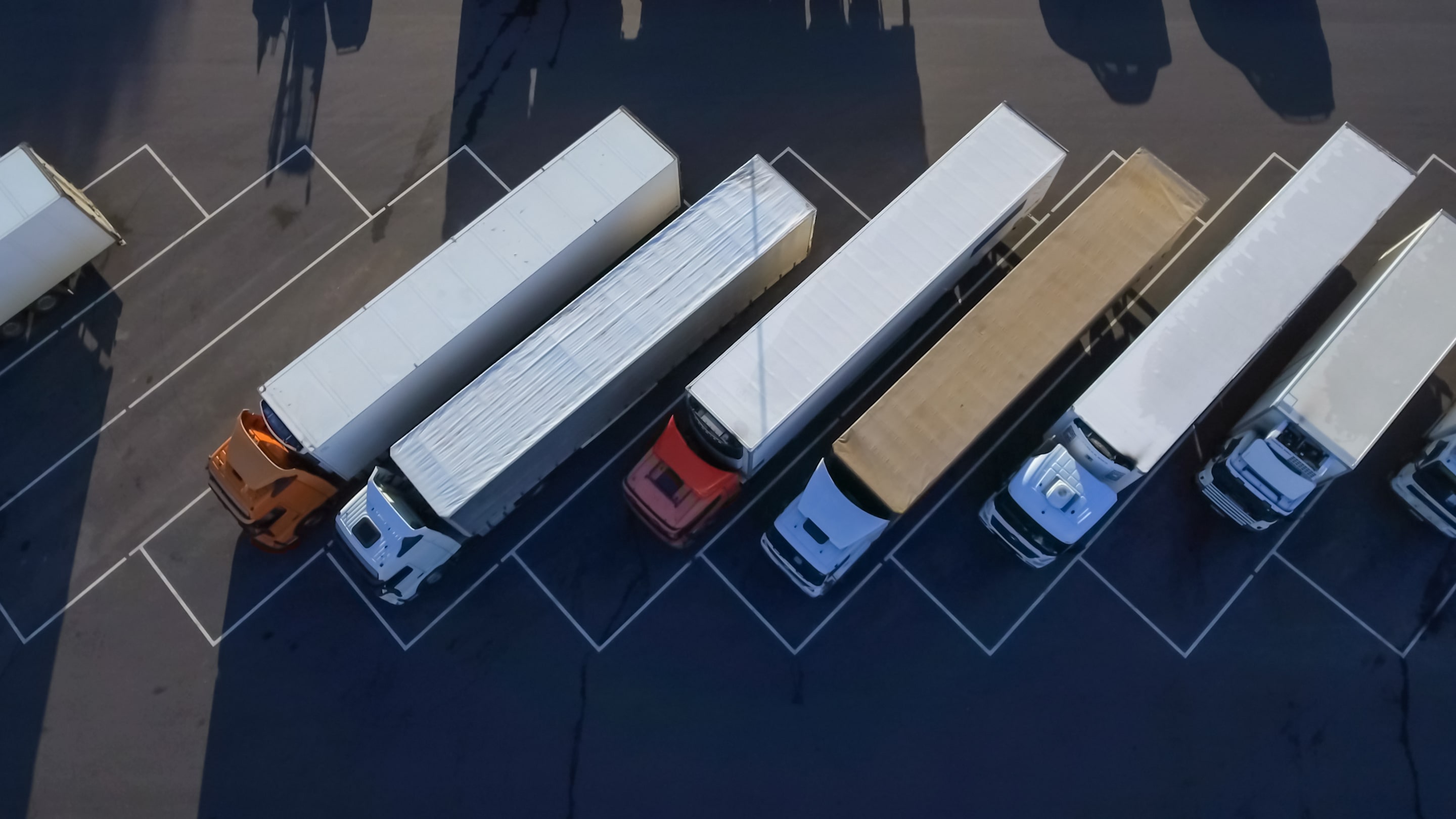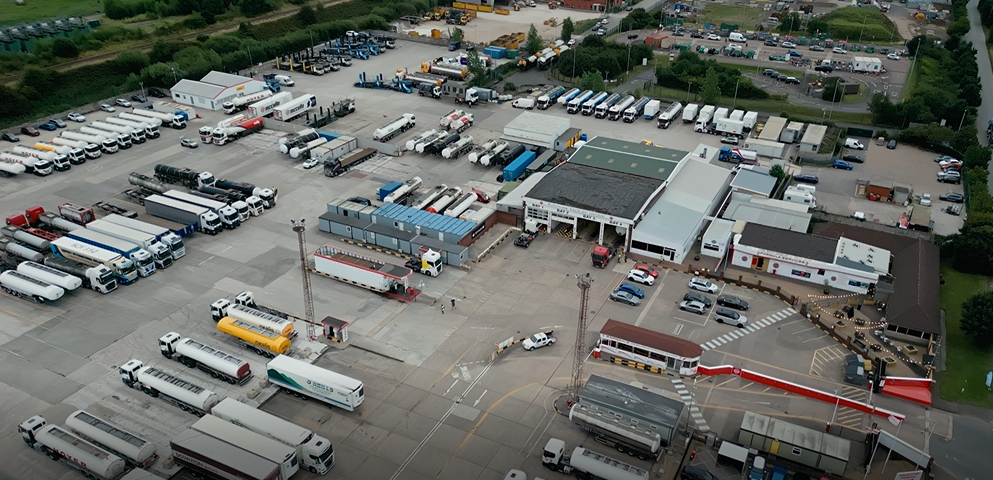
Guest
Sunkiasvorių sunkvežimių vairuotojų trūkumo problemos sprendimas Jungtinėje Karalystėje 2024/2025 m.
Sukurta: 16-08-2024
•
Atnaujinta: 10-10-2024
Sunkvežimių vairuotojų trūkumas Jungtinėje Karalystėje yra sudėtingas ir daugialypis iššūkis, turintis toli siekiančių pasekmių šalies ekonomikai ir tiekimo grandinėms. Tačiau sutelktos vyriausybės, pramonės ir suinteresuotųjų subjektų pastangos pradėjo duoti teigiamų rezultatų, o tai rodo, kad padėtis gali keistis.
Žvelgiant į 2024 ir 2025 m. JK, tolesnis įsipareigojimas spręsti vairuotojų trūkumo problemą ir dėmesys talentingų žmonių pritraukimui bei išlaikymui bus labai svarbus siekiant užtikrinti ilgalaikį transporto sektoriaus atsparumą ir klestėjimą.
Krizės gylis
Sunkvežimių vairuotojų trūkumas Jungtinėje Karalystėje kelia vis didesnį susirūpinimą, o 2021 m. padėtis pasieks kritinį tašką. Remiantis pramonės ataskaitomis, krizės įkarštyje šalyje trūko apie 100 000 sunkiasvorių sunkvežimių vairuotojų. Šis skaičius gerokai padidėjo, palyginti su 2019 m. užfiksuotu 59 000 vairuotojų trūkumu, ir tai rodo, kad padėtis sparčiai blogėja.
Šį trūkumą lėmė įvairūs veiksniai, įskaitant COVID-19 pandemijos poveikį, "Brexit" pasekmes ir IR35 mokesčių taisyklių pakeitimus, kurie paveikė sunkiasvorių sunkvežimių vairuotojus, įdarbintus agentūrų pagal darbo sutartį. Dėl šių trikdžių daug patyrusių vairuotojų pasitraukė iš šios pramonės šakos, o į rinką atėjo nepakankamai naujų talentų, kad užpildytų susidariusią tuštumą.

Vyriausybės įsikišimas ir pramonės pastangos
Pripažindama padėties rimtumą, JK vyriausybė ir pramonės suinteresuotosios šalys ėmėsi ryžtingų veiksmų, kad išspręstų sunkiasvorių sunkvežimių vairuotojų trūkumo problemą. Transporto departamentas pranešė apie pastebimą pagerėjimą - krovinių vežimo įmonių pranešimuose nurodytų laisvų sunkiasvorių sunkvežimių vairuotojų procentinė dalis sumažėjo nuo 43 % 2021 m. IV ketvirtį iki 23 % 2023 m. III ketvirtį.
Viena iš svarbiausių įgyvendintų priemonių - didesnis finansavimas, skirtas naujiems sunkiasvorių krovininių transporto priemonių vairuotojams pritraukti ir mokyti. Vyriausybė taip pat paspartino sunkiasvorių krovininių transporto priemonių vairuotojų pažymėjimų gavimo procesą ir investavo 8 mln. svarų sterlingų į sunkiasvorių krovininių transporto priemonių poilsio aikštelių kokybės gerinimą, spręsdama įsisenėjusią prastų vairuotojų darbo sąlygų problemą.
SNAP padėjo keliems Jungtinės Karalystės sunkvežimių parkams parengti paraiškas vyriausybės finansavimui gauti, kad jie galėtų pagerinti savo infrastruktūrą. Sužinokite daugiau apie sunkvežimių aikšteles, įtrauktas į SNAP tinklą.
Darbo jėgos senėjimo problemos sprendimas ir jaunesnių talentų pritraukimas
Viena iš nuolatinių sunkvežimių vairuotojų sektoriaus problemų - senstanti darbo jėga, nes vidutinis vairuotojų amžius yra 48 metai. Pramonei sunku pritraukti jaunesnių talentų, nes suvokimas apie prastas darbo sąlygas, vidutinį darbo užmokestį ir neįkvepiančią karjerą daugelį atbaido nuo sunkvežimių vairuotojo karjeros.
Siekdama išspręsti šią problemą, vyriausybė neseniai pradėjo konsultacijas dėl minimalaus amžiaus reikalavimo autobusų vairuotojams sumažinimo, taip atverdama daugiau galimybių jaunesniems asmenims pradėti dirbti transporto sektoriuje. Šis žingsnis kartu su pastangomis gerinti vairuotojų infrastruktūrą ir darbo sąlygas galėtų padėti padaryti šią pramonės šaką patrauklesnę naujai darbuotojų kartai.
Žr. žemėlapį, kuriame nurodomos sunkvežimių stovėjimo aikštelės, sunkvežimių plovyklos ir apgyvendinimo vietos įvairiuose SNAP tinklo regionuose.

Reguliavimo kliūčių įveikimas ir lankstumo skatinimas
Kitas veiksnys, dėl kurio trūksta sunkiasvorių sunkvežimių vairuotojų, yra reguliavimo kliūtys ir biurokratija, su kuria susiduria nauji vairuotojai, pradedantys dirbti šioje pramonės šakoje. Būtinų licencijų ir sertifikatų gavimo procesas gali užimti daug laiko ir kainuoti, o tai atbaido potencialius kandidatus.
Siekdamos išspręsti šią problemą, pramonės suinteresuotosios šalys pasisakė už lankstesnes mokymo ir testavimo procedūras, panašias į tas, kurias taiko autobusų įmonės. Tikimasi, kad supaprastinus procesą ir padarius jį prieinamesnį, padidės kvalifikuotų vairuotojų, patenkančių į rinką, skaičius.
"Brexit" ir COVID-19 poveikis
Sunkvežimių vairuotojų trūkumą Jungtinėje Karalystėje dar labiau apsunkino "Brexit" padariniai ir COVID-19 pandemijos sukelti trikdžiai. Didelį smūgį sudavė ES vairuotojų, kurie anksčiau sudarė didelę JK sunkvežimių vairuotojų darbo jėgos dalį, praradimas.
Be to, dėl pandemijos poveikio mokymams ir testavimui į rinką atėjo daug naujų vairuotojų. Atsigavus ekonomikai, padidėjusi prekių ir paslaugų paklausa dar labiau apkrauna jau ir taip įtemptą transporto sektorių.

Bendradarbiavimas ir inovacijos
Sunkvežimių vairuotojų trūkumo problemai spręsti reikės bendrų vyriausybės, pramonės suinteresuotųjų šalių ir švietimo įstaigų pastangų. Bendradarbiaudamos jos gali parengti išsamius sprendimus, kuriais būtų pašalintos pagrindinės problemos priežastys ir sukurta tvaresnė ir atsparesnė transporto sistema.
Inovatyvių metodų, pavyzdžiui, technologijų naudojimas logistikos optimizavimui ir vairuotojų darbo efektyvumo didinimui, taikymas taip pat gali būti labai svarbus siekiant sušvelninti vairuotojų trūkumo poveikį. Investicijos į infrastruktūrą, mokymo programas ir į vairuotojus orientuotas iniciatyvas gali padėti sukurti stipresnę, įvairesnę ir atsparesnę darbo jėgą.
Kelias į priekį
Jungtinei Karalystei sprendžiant besikeičiančią sunkiasvorių sunkvežimių vairuotojų trūkumo problemą, akivaizdu, kad sprendimui reikės įvairiapusio požiūrio. Norint užtikrinti šalies transporto tinklo atsparumą, labai svarbi bus nuolatinė vyriausybės parama, pramonės atstovų bendradarbiavimas ir įsipareigojimas pritraukti ir išlaikyti talentingus vairuotojus.
Nors artimiausiu metu krizė gali būti ne visiškai išspręsta, iki šiol žengti žingsniai teikia vilties. Ir toliau sutelkdama dėmesį į inovacijas, lankstumą ir įtrauktį, Jungtinė Karalystė gali siekti ateities, kai transporto sektorius bus pasirengęs patenkinti augančius ekonomikos ir piliečių poreikius.



